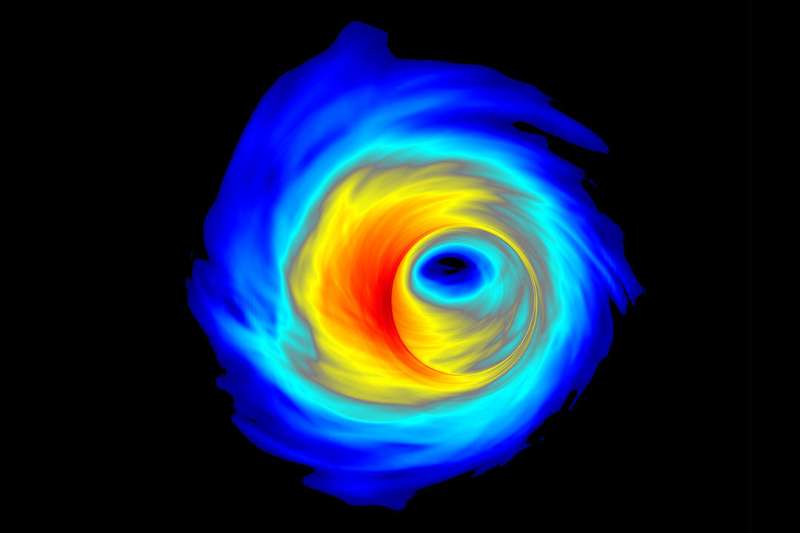November 6, 2019 report
Simulations show how massive black holes could be formed by mergers

A team of researchers affiliated with several institutions in the U.S. along with one in India and one in Hungary has created simulations that could explain how larger than expected black holes could form near supermassive black holes at the center of galaxies. In their paper published in the journal Physical Review Letters, the group describes how they made their simulations and what they showed.
Prior research has shown that it is likely that black holes that form due to the death of a star cannot exceed 40 solar masses—more massive stars would have more nuclei which suggests they would wind up as pairs of unstable supernovae. But researchers working at the LIGO and VIRGO projects have found evidence of black holes that are bigger than the 40 solar mass threshold. Some in the field have proposed that such black holes could come about due to random collisions and mergers with other black holes—but the idea has not been fully developed until now.
In this new effort, the researchers built on prior research that suggests that because of the nature of black holes, it is likely that those that exist near the center of a galaxy would migrate towards a ring that exists around the supermassive black hole that exists at the center. Such black holes would become trapped in the ring and would congregate in what is known as an active galactic nucleus. In such a scenario, it is likely that one of the black holes would move close enough to another for the two to become attracted to one another, eventually winding up with a merger. Under such a scenario, it would be possible for multiple mergers to occur with the same black hole, resulting in it becoming bigger and bigger. To test the theory, the researchers input data describing such action into a computer and via simulations used it to estimate the probability of larger than normal black holes coming into existence. They report that the simulations showed it should be possible for larger than normal black holes to form under such conditions, in the range 60 to 80 solar masses. The team also found that such black holes would spin in the direction opposite of their orbiting motion.
More information: Y. Yang et al. Hierarchical Black Hole Mergers in Active Galactic Nuclei, Physical Review Letters (2019). DOI: 10.1103/PhysRevLett.123.181101
Journal information: Physical Review Letters
© 2019 Science X Network





















